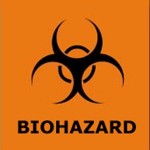A question from out of the blue (04.24.17):
Hello Daniel my question is when transporting regulated medical waste what is the proper manifest to use
It took me a few weeks to reply (I replied 05.10.17). I was real busy back then:
Thank you for contacting me. I apologize for the delay in my response. Please see below.
- The answer to your questions depends on whether or not the regulated medical waste is subject to the Hazardous Materials Regulations of the USDOT. It may be subject to an exception from full regulation. Please read: The Identification and Transportation of a Regulated Medical Waste.
- Also, since regulated medical waste is not regulated by the USEPA it may be subject to state-specific regulations. Some states require the use of a state-specific shipping document for regulated medical waste, e.g. Potentially Infectious Medical Waste in Illinois.
Interested in site specific training at your site that covers this topic, and more! Ask me about my Onsite Training |



